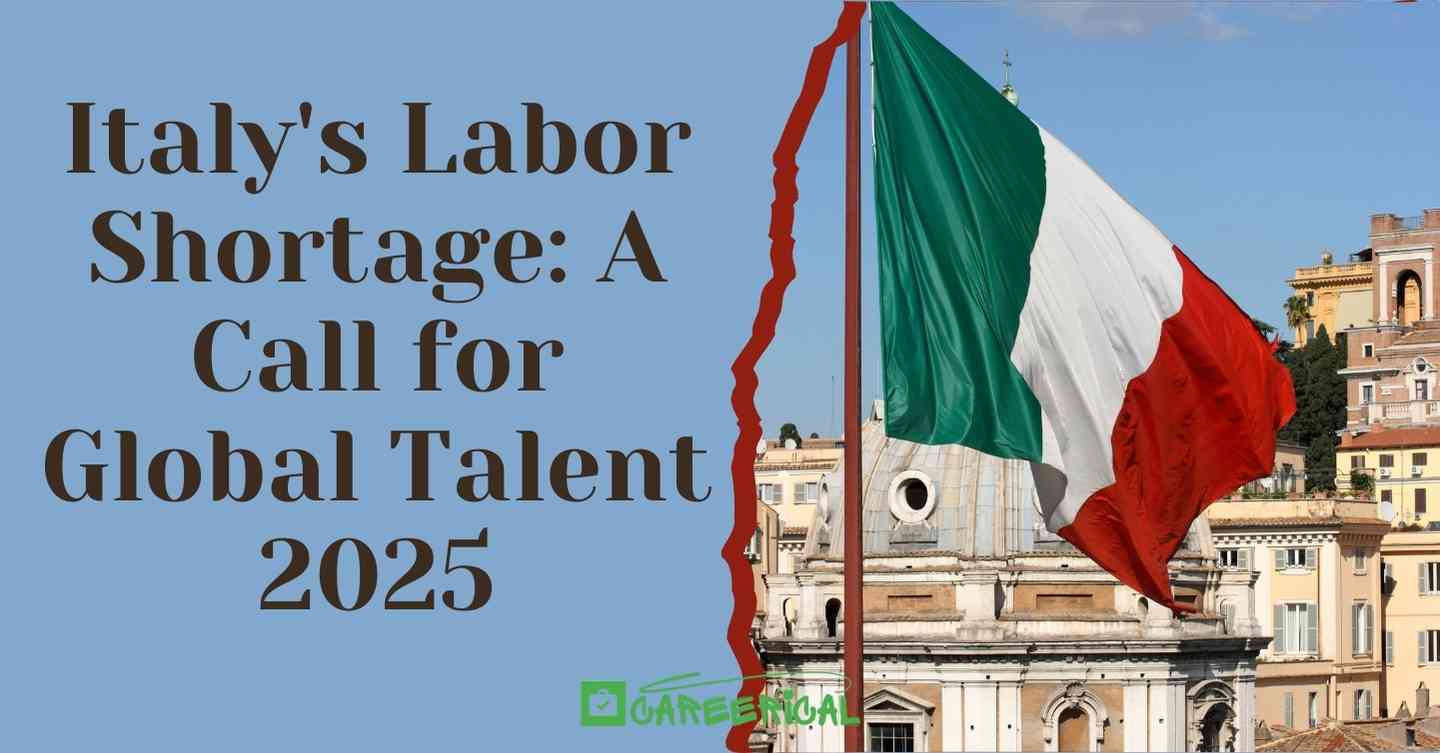Italy’s Labor Shortage: A Call for Global Talent 2025
Italy is currently navigating through a challenging phase of labor shortages in various critical sectors. This situation has led to an increasing reliance on international expertise to fill positions in 10 key job areas, crucially addressing the gap in skilled labor.
Detailed insights from Careerical highlight that the most sought-after occupations in Italy span diverse sectors, including healthcare and social services, science and technology, engineering and construction, and the hospitality industry.
High-Demand Job Roles in Italy
EURES, the European Labour Authority, projects that from 2023 to 2027, Italy will heavily rely on international workers for several professions:
- Medical Doctors
- Nursing Staff
- Physiotherapists
- Professionals in Healthcare and Social Services
- Mathematics and Computer Science Specialists
- ICT Technicians
- Engineers across Various Disciplines
- Engineering Technicians
- Skilled Construction Workers
- Restaurant Industry Personnel
(Insert link to the EURES report or website here)
These roles not only highlight the sectors experiencing shortages but also represent a significant opportunity for skilled professionals worldwide to explore career advancements and residency in Italy.
Recommended: 🇨🇦 Canada Open Farming Roles: Earn $12-$30/hr with Visa-Sponsored Agricultural Roles
Navigating the Italian Work Visa Process
Securing an Italian Work Visa
For non-EU individuals aiming to work in Italy, acquiring a work visa is a necessary step. This typically involves securing a job with an Italian employer, who then handles the work permit application.
Italy’s recognition of the value of skilled international workers has led to streamlined visa processes, creating a welcoming atmosphere for foreign talent. (Insert link to Italian visa information page)
Steps to Acquire an Italian Work Visa
Though initially daunting, the Italian work visa process has been simplified in recent years. The key steps include:
- Finding an Italian Employer: This crucial step involves securing employment in Italy, with the employer then applying for a work permit.
- Work Permit Approval: After obtaining the work permit, the next step is to apply for a work visa at the nearest Italian embassy or consulate.
- Transition to a Residence Permit: Upon arrival in Italy, the individual can convert their work visa into a residence permit, enabling legal residence and employment in Italy.
Italian Government’s Initiatives to Simplify the Process
Streamlining the Visa Application Process
In response to the labor crisis, the Italian government has implemented reforms to make the visa application process more accessible:
- Reduced Paperwork and Bureaucratic Hurdles: These changes aim to enhance the efficiency and accessibility of the visa application process.
- Expedited Processing Times: A focus on reducing wait times for work permits and visa applications.
- Integration and Support Programs: Initiatives are underway to assist foreign workers in integrating into Italian society, including housing, education, and other essential services.
More Opportunities:
- Study in Canada for Free: University of Saskatchewan Scholarships 2026
- 500 Hours to Residency: How to Qualify for the UAE Golden Visa Through Volunteering
- Tier 2 Visa Sponsorship: Care Assistant Jobs in the UK
- Richard C. Malmsten Memorial Foundation Scholarship 2026 at the University of Gothenburg
- 🇨🇭 Visa Sponsored Farm Worker Jobs in Switzerland for 2025

